Overview
Kamikochi, Matsumoto, Nagano
– A mecca for alpinists, with a unique balance of exquisite scenery of mountains, waters, and greenery
Kamikochi
The area referred to as gKamikochih is a basin-like valley in which the Azusa River flows through the center at an altitude of approx. 1,500 meters, surrounded by steep 3,000-meter-high mountains of the Northern Japan Alps including the Yari-Hotaka mountain range, Mt.Kasumizawadake, and Mt. Yakedake.
Geomorphology
The acute shape of the Yari-Hotaka mountain range was formed by an uplift movement 1.4 to 0.8 million years ago, raising a caldera from 1,000 to 3,000 meters high, followed by the abrasive action of glaciers on the rocks 60,000 years ago and 20,000 years ago.
The basin-like flat terrain of Kamikochi was formed by the deposition of a huge amount of earth and sand, which was produced by the erosion of the steep ridges, into a lake which appeared as a result of the old Azusa River (which used to flow on the Gifu side) being dammed after the eruption of Mt. Yakedake. The erosion, displacement, and deposition of earth and sand continuously occurs in the main and branch streams of the Azusa River.
Development of Modern Alpinism
Kamikochi has been a main stage in the history of mountaineering in Japan. The history starts from the first climb of Mt. Yari by a Buddhist priest Banryu in the Edo Period, followed by the development of modern mountaineering from 1867, spurred on by William Gowland and Walter Westonfs pioneering climbs.
While mountain climbing is a popular sport and recreational activity now, the Northern Japan Alps and its key feature, the Yari-Hotaka mountain range attracts many mountain enthusiasts. Kamikochi has become a popular climbing base, and is naturally called a sanctuary by alpinists.
Kamikochi is environmentally unique in that the valley is located at a high altitude yet is similar to a basin, leading to the formation of diverse plant societies, such as riparian forests of Chosenia (a species of willow), wet forests of Japanese elm, beautiful sub-alpine conifer forests mainly composed of Veitch’s silver fir, communities of windflower, and various alpine plants. An abundant ecosystem is maintained with precious animals and plants, including ermine, Japanese serow, birds such as Japanese ptarmigan, and alpine butterflies such as orange tip and poplar admiral.
Kamikochi boasts a unique alpine landscape, composed of wild lofty rock ridges of the Hotaka mountain range, cold clear streams of the Azusa River, beautiful ponds of Taisho, Tashiro, and Myojin, as well as the woodlands stretching along the foot of the mountains. The admirable harmony of grandeur and delicacy, harshness and grace of Kamikochi attracts, overwhelms and pulls people’s heartstrings all year around.
Kamikochi, one of the most scenic treasures in Japan, used to be a site for timber production and grazing. Later in 1934, it was designated as a part of the Chubu-Sangaku National Park which celebrated its 80th anniversary in 2014. In addition, Kamikochi is designated as a special scenic spot and a special national treasure (only one other area in Japan is similarly designated for both). Its protection and utilization is promoted.
Currently, as a result of the Kamikochi Beautification Societyfs continuous efforts to beautify and keep Kamikochi clean, and progressive management such as restrictions on private car usage and maintenance of trails conducted by the people concerned, Kamikochi is now a model for Japanese national parks. Furthermore, it has become a signature mountain resort of Nagano.

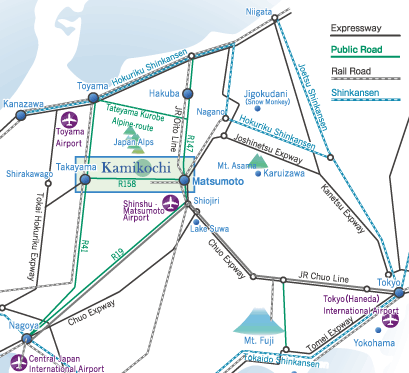
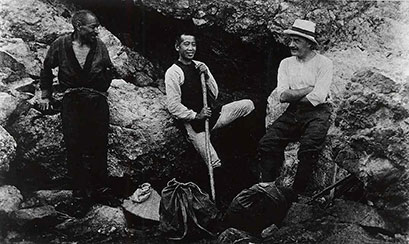
Walter Weston and his mountain guide Kamonji
(courtesy of Matsumoto City Museum)
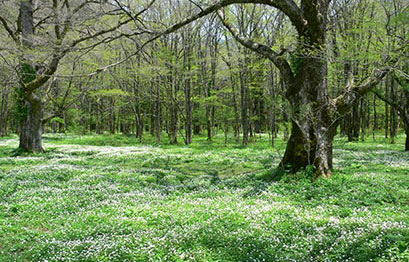
Windflowers in Tokusawa
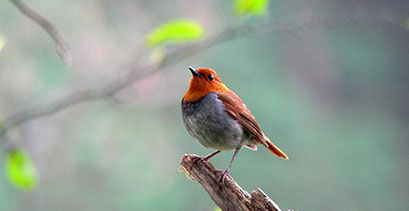
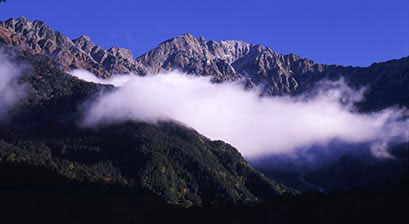
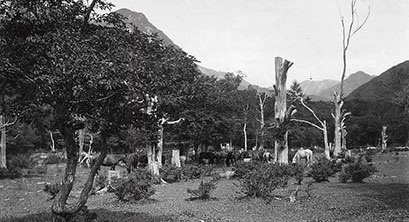
Pastured cattle at Tokusawa ranch
(courtesy of Matsumoto City Museum)
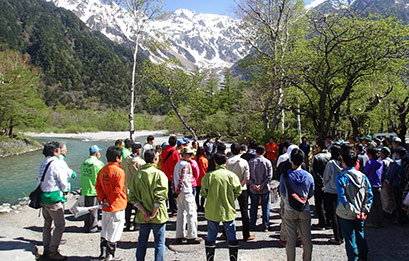
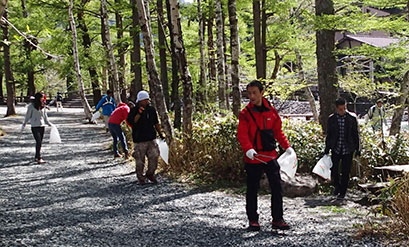
Beautification cleanup activities
Click here for more information (the official Kamikochi website).